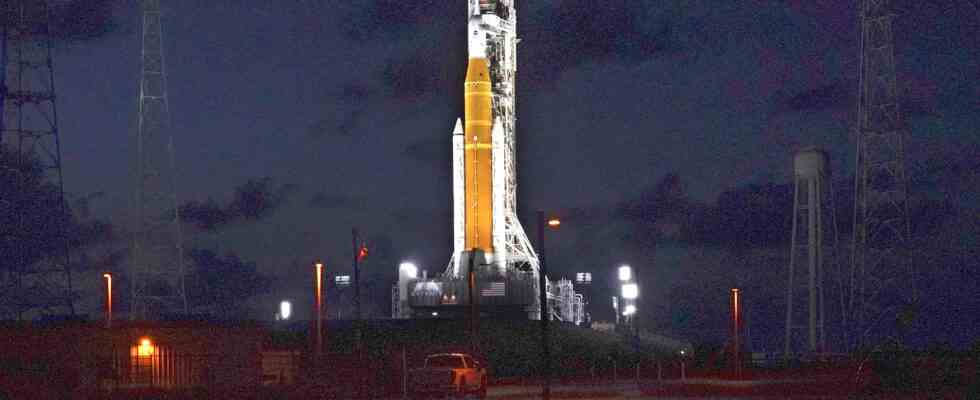Status: 04.08.2022 12:20 p.m
It should be less than three years before astronauts will be able to look from the moon to earth again. Before that, however, the necessary rocket must be tested. NASA has now presented the so-called Artemis I program.
NASA boss Bill Nelson didn’t even try to hide his enthusiasm at the press conference on the upcoming moon mission. Just 26 days until the most powerful rocket NASA has ever launched into space lifts off from Pad 39B at Kennedy Space Center, Nelson said. It has also launched Saturn V rockets to the moon and space shuttle flights.
On August 29th, history is to be written there again: The Artemis program, which is supposed to bring people back to the moon after 50 years, will start there. In two weeks, the newly developed rocket with the name SLS and the newly developed Orion space capsule at the top will be brought to the launch pad, said Mike Sarafin, head of the Artemis I mission.
Review down to the smallest detail
However, Artemis I will not yet take humans to the moon. It is a test flight in which both the rocket and the space capsule are checked down to the smallest detail. Does the start work smoothly? Do the booster rockets fire? Does the main engine ignite? Do the booster rockets separate as planned, and does the space capsule detach from the rocket at the right time? Everything must work together perfectly to send Orion on its way to the moon, stressed Sarafin.
In order to be able to operate the systems of the Orion capsule in space, NASA uses a module developed by the European space agency ESA. And according to NASA boss Nelson, ESA is already over the moon: “A few weeks ago I was in Europe and they were gaga,” he said proudly.
No passengers, no landing
The capsule will remain in space for 42 days, orbiting the moon in an ellipse – at the closest point to the moon only 100 kilometers from its surface, at the furthest over 6000 kilometers. So there is no landing on the moon yet, nor are there any people on board. The goal of this first flight is solely to collect data and intelligence.
But passengers are still on board: A doll with the name Commander Moonikin Campos will take a seat in the command seat of the capsule. Equipped with numerous sensors, the force that acts on the astronauts when they take off and re-enter the earth’s atmosphere is to be measured, explained Bhavya Lal from NASA Headquarters.
Endurance test at the end
But Commander Moonikin doesn’t fly alone. Two other similarly equipped puppets are also flying to study the effects of radiation on this mission. Especially in the case of women astronauts, who are affected differently by radiation than men. That’s why there are also on board: Helga and Soha.
The endurance test follows at the end. Re-entering Orion’s atmosphere will be tougher than anything NASA has done in human spaceflight to date. The capsule will hit Earth’s atmosphere at 32 times the speed of sound, reports Nelson. That corresponds to around 40,000 kilometers per hour. The underside of the capsule becomes even hotter than that of the space shuttle.
The NASA scientists therefore want to pay special attention to this critical phase at the end of the mission. If an error occurs here, the billion-dollar project will burn up in the earth’s atmosphere and the dream of flying to the moon will once again be a thing of the past.
Flight to the moon: Artemis I Mission enters the final phase
Florian Mayer, ARD Washington, August 4, 2022 10:40 a.m

